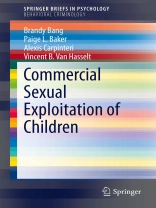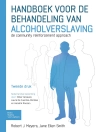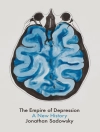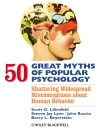The commercial exploitation of children is a global crisis (Rahman, 2011; Svensson, 2006). However, media outlets and sociological researchers have successfully situated the problem as a primarily Asian, South American, or Eastern European concern. In the process, the exploitation of children in the United States has largely been ignored. The continued trafficking of international youth into this country, coupled with the growing rate at which American born children are targeted by interstate sex traffickers, speaks to the urgency with which the domestic exploitation of children must be addressed (Walker-Rodriguez & Hill, 2011). In fact, research suggests that an average of 250, 000 American children and adolescents are at risk of commercial exploitation each year (Estes & Weiner, 2001). Further, there are indications that current data vastly underestimate the actual numbers of vulnerable and victimized youth (Chase & Statham, 2005). According to the U.S. Department of Justice (2007), no systematic efforts have been made to examine the commercial exploitation of children in this country. The low visibilities of the crime, combined with the inherent vulnerability of the victims, have facilitated the continued victimization of these children. The purpose of this book is to provide a critical analysis of the domestic, commercial exploitation of children. A careful explanation of the differing forms of commercial exploitation of children, victim and offender characteristics, and the mechanisms which maintain the problem will assist health care providers, researchers, and law enforcement in their efforts with this marginalized and understudied population. The authors begin with a comprehensive review of extant literature in this area. Additionally, case studies of child sexual exploitation are included to further illustrate the severity, complexity, and depravity of commercial exploitation in real life cases.
Jadual kandungan
Introduction.- Commercial Sexual Exploitation of Children.- Victimology.- Domestic Victims.- Male Victims.- International Victims.- Child Trafficking.- Offender Characteristics.- Mechanism of Child Trafficking.- Case Example 1: Sex Trafficking Risk Factors.- Child Prostitution.- Offender Characteristics.- Mechanism of Forced Prostitution.- Case Example 2: Methods of Victimization by Child Prostitution.- Pornography.- Offender Characteristics.- Mechanism of Pornography.- Case Example 3: Consumer, Trader, and Distributor of Child Pornography.- Case Example 4: Offender Networks.- Sex Tourism.- Offender Characteristic.- Mechanism of Sex Tourism.- Case Example 5: The Preferential Sexual Tourist.- Case Example 6: The Repeat Tourist.- Sex Traveler/Enticer.- Offender Characteristics.- Mechanism of Sex Traveling.- Case Example 7: The Enticement/Grooming Process of a Traveler.- Case Example 8: Luring Behaviors of a Traveler.- CSEC Legislation.- Legislative History.- Current Federal Laws Used to Prosecute CSEC Offenders.- Conclusion.
Mengenai Pengarang
Brandy Bang, M.S., is a Clinical Psychology Doctoral Candidate at the Center for Psychological Studies, Nova Southeastern University. She previously received a Bachelor of Arts in Psychology from University of South Florida. Her clinical and research interests are in the area of Police Psychology, and include: crisis intervention in law enforcement, crisis (hostage) negotiations, police officer stress, commercialized sexual exploitation of children and crisis intervention training methods. She has published and/or presented research in these areas. Mrs. Bang is also in the process of receiving her certificate of specialized training in Critical Incident Stress Management (CISM), with a concentration in Emergency Services.
Paige L. Baker, M.S., is a Clinical Psychology Doctoral Candidate at the Center for Psychological Studies, Nova Southeastern University. She previously received one Bachelor of Arts in Psychology and a second in Women & Gender Studies from Georgetown University. Her areas of professional interest include commercial sexual exploitation, multicultural and diversity issues, military psychology, child advocacy, and professional issues in advocacy work. She has published and/or presented research in all of these areas. Ms. Baker is also a Research Assistant at the National Council on Crime and Delinquency Where she participates in data analysis for the National Girls Institute (NGI) research component while simultaneously working on the NGI website content development. She is also assisting with the process evaluation of the gender-responsive juvenile justice programs across the country. As such, she has extensive experience working with at-risk youth and vulnerable populations in a research setting.
Special Agent (SA) Alexis Carpinteri began working for the FBI in 1996. In 1998, she began working on Crimes Against Children matters and helped to create the first specialized squad in the Miami Division for Crimes Against Children to deal with the exploitation of children and criminal reactive crimes involving children in 2005. SA Carpinteri also helped to create the Minor Vice Task Force, a multi-agency task force dedicated to cases involving the commercial exploitation of children. She has presented at several Project Safe Childhood Conferences and the Dallas Crimes Against Children Conference. SA Carpinteri has also testified as an expert witness in the federal court system, and she served as a Case Agent and/or participated in numerous investigations of child exploitation.
Vincent B. Van Hasselt, Ph.D., is Professor of Psychology and Director of the Family Violence Program at Nova Southeastern University. He is also editor of Aggression and Violent Behavior: A Review Journal and Journal of Child and Adolescent Substance Abuse. Dr. Van Hasselt has served as lecturer and consultant to the FBI’s Behavioral Science, Crisis Negotiation, and Law Enforcement Communication Units, and is part of the Bureau’s Crisis Prevention and Intervention Program. His clinical and research interests are in the areas of crisis and hostage negotiations, police stress and mental health, critical incident response, and the emerging field of behavioral criminology. Dr. Van Hasselt is also a certified police officer with the Plantation, Florida, Police Department.












